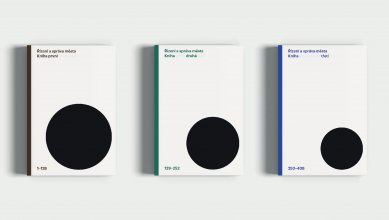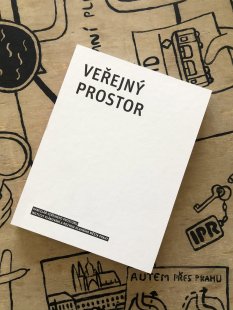
The End of Visual Smog in Prague - Book Presentation
Source
Michaela Hečková, piaristi.cz
Michaela Hečková, piaristi.cz
Publisher
Tisková zpráva
02.06.2020 15:45
Tisková zpráva
02.06.2020 15:45
Czech Republic
Prague
How to reduce visual smog in the very center of the city? How to create and maintain quality and vibrant public space? How to effectively manage and govern a city? The rich program prepared by CAMP for architecture enthusiasts in June will answer not only these questions. The interactive map exhibition Two Pragues, which follows the dramatic development of Prague over the past 200 years, will also continue.
The City Hall of Prague has completed the Manual for a Cultivated Prague. This is a guide for advertising labeling of establishments in the center of the capital, which helps to navigate the rules that must be followed in the protected historic center of the city. Is this enough, though? What approaches have proven effective in the demanding effort to reduce visual smog? And what is the role of politicians, entrepreneurs, graphic designers, and the public? The launch of the new manual (June 3, 2020) will be accompanied by a discussion featuring graphic designer Veronika Rút Nováková, author of the Manual of Good Practice for Advertising and Signage in the Brno - Střed district, activists Václav Cinádr and Zdeněk Jahn, lawyer Anna Marie Hanušová, and the author of the Prague manual Kristýna Drápalová.
The transformation of streets, squares, and parks is an ongoing process of cooperation and communication among diverse interest groups in the city. The publication Public Space chronicles the first five years of the existence of the Office of Public Space at the Institute of Planning and Development of the Capital City of Prague, which has been consistently focused on the cultivation and systematization of the treatment of Prague’s public space since its establishment in 2013, under the leadership of Pavla Melková and later Kristina Ullmannová. The book launch will take place at CAMP on Tuesday, June 2, 2020, at 7:00 PM.
“Prague's public space has undergone significant changes in recent years. The urban furniture, the way people use and enliven the squares and streets, our demands and needs are changing. Furthermore, public space will take on even greater importance in a world that has survived the pandemic. It is not enough to have a nice, functional place with quality design; the space must be democratic, safe, and diverse. Likewise, it should be best cultivated and not suppressed solely by commercial intentions. That's why I am very pleased that in June we will be launching several publications at CAMP that address this topic. I feel it is necessary to constantly emphasize this,” adds Adam Švejda, director of the External Relations Section of the Institute of Planning and Development.
Facebook event >
The City Hall of Prague has completed the Manual for a Cultivated Prague. This is a guide for advertising labeling of establishments in the center of the capital, which helps to navigate the rules that must be followed in the protected historic center of the city. Is this enough, though? What approaches have proven effective in the demanding effort to reduce visual smog? And what is the role of politicians, entrepreneurs, graphic designers, and the public? The launch of the new manual (June 3, 2020) will be accompanied by a discussion featuring graphic designer Veronika Rút Nováková, author of the Manual of Good Practice for Advertising and Signage in the Brno - Střed district, activists Václav Cinádr and Zdeněk Jahn, lawyer Anna Marie Hanušová, and the author of the Prague manual Kristýna Drápalová.
The transformation of streets, squares, and parks is an ongoing process of cooperation and communication among diverse interest groups in the city. The publication Public Space chronicles the first five years of the existence of the Office of Public Space at the Institute of Planning and Development of the Capital City of Prague, which has been consistently focused on the cultivation and systematization of the treatment of Prague’s public space since its establishment in 2013, under the leadership of Pavla Melková and later Kristina Ullmannová. The book launch will take place at CAMP on Tuesday, June 2, 2020, at 7:00 PM.
“Prague's public space has undergone significant changes in recent years. The urban furniture, the way people use and enliven the squares and streets, our demands and needs are changing. Furthermore, public space will take on even greater importance in a world that has survived the pandemic. It is not enough to have a nice, functional place with quality design; the space must be democratic, safe, and diverse. Likewise, it should be best cultivated and not suppressed solely by commercial intentions. That's why I am very pleased that in June we will be launching several publications at CAMP that address this topic. I feel it is necessary to constantly emphasize this,” adds Adam Švejda, director of the External Relations Section of the Institute of Planning and Development.
Facebook event >
The English translation is powered by AI tool. Switch to Czech to view the original text source.


0 comments
add comment










